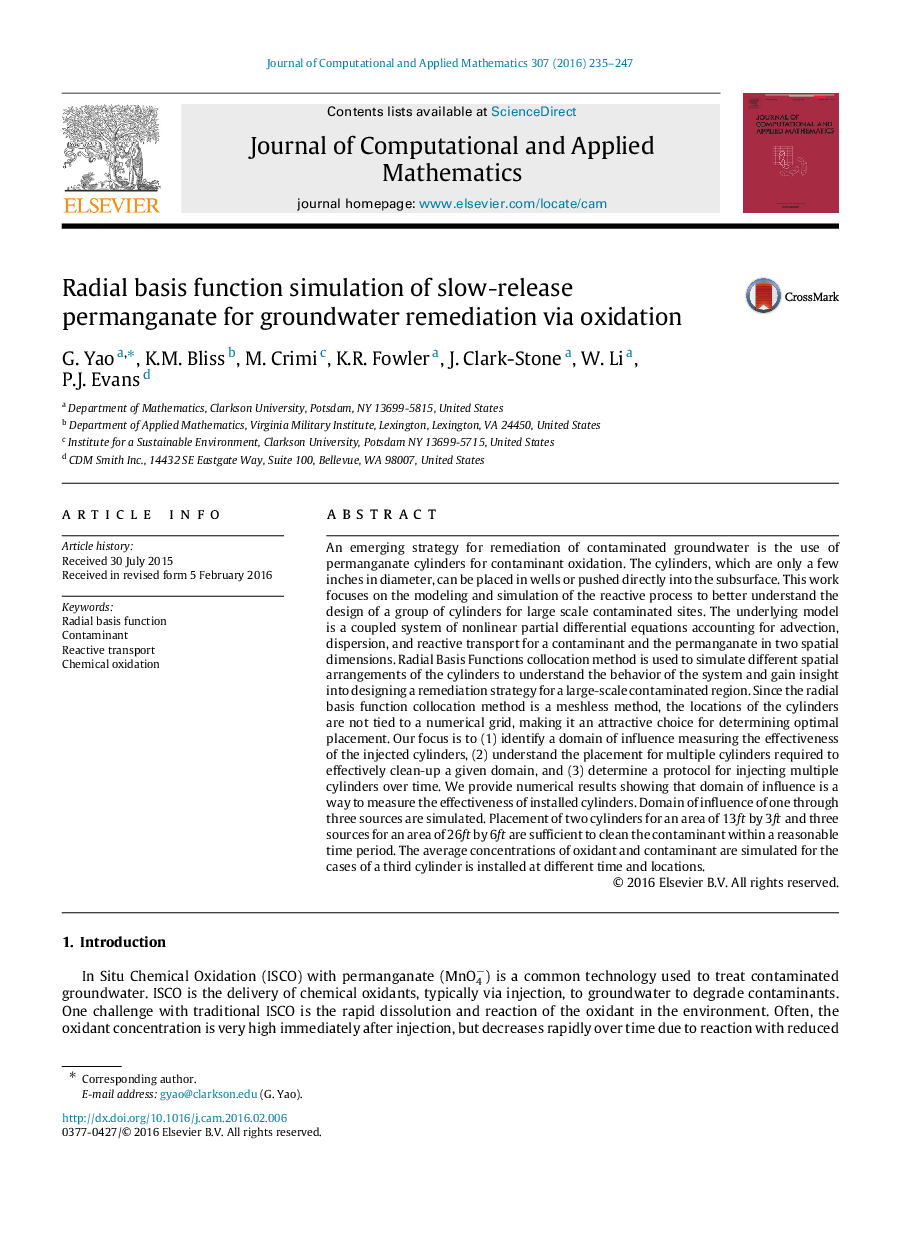| Article ID | Journal | Published Year | Pages | File Type |
|---|---|---|---|---|
| 4637865 | Journal of Computational and Applied Mathematics | 2016 | 13 Pages |
An emerging strategy for remediation of contaminated groundwater is the use of permanganate cylinders for contaminant oxidation. The cylinders, which are only a few inches in diameter, can be placed in wells or pushed directly into the subsurface. This work focuses on the modeling and simulation of the reactive process to better understand the design of a group of cylinders for large scale contaminated sites. The underlying model is a coupled system of nonlinear partial differential equations accounting for advection, dispersion, and reactive transport for a contaminant and the permanganate in two spatial dimensions. Radial Basis Functions collocation method is used to simulate different spatial arrangements of the cylinders to understand the behavior of the system and gain insight into designing a remediation strategy for a large-scale contaminated region. Since the radial basis function collocation method is a meshless method, the locations of the cylinders are not tied to a numerical grid, making it an attractive choice for determining optimal placement. Our focus is to (1) identify a domain of influence measuring the effectiveness of the injected cylinders, (2) understand the placement for multiple cylinders required to effectively clean-up a given domain, and (3) determine a protocol for injecting multiple cylinders over time. We provide numerical results showing that domain of influence is a way to measure the effectiveness of installed cylinders. Domain of influence of one through three sources are simulated. Placement of two cylinders for an area of 13ft13ft by 3ft3ft and three sources for an area of 26ft26ft by 6ft6ft are sufficient to clean the contaminant within a reasonable time period. The average concentrations of oxidant and contaminant are simulated for the cases of a third cylinder is installed at different time and locations.
